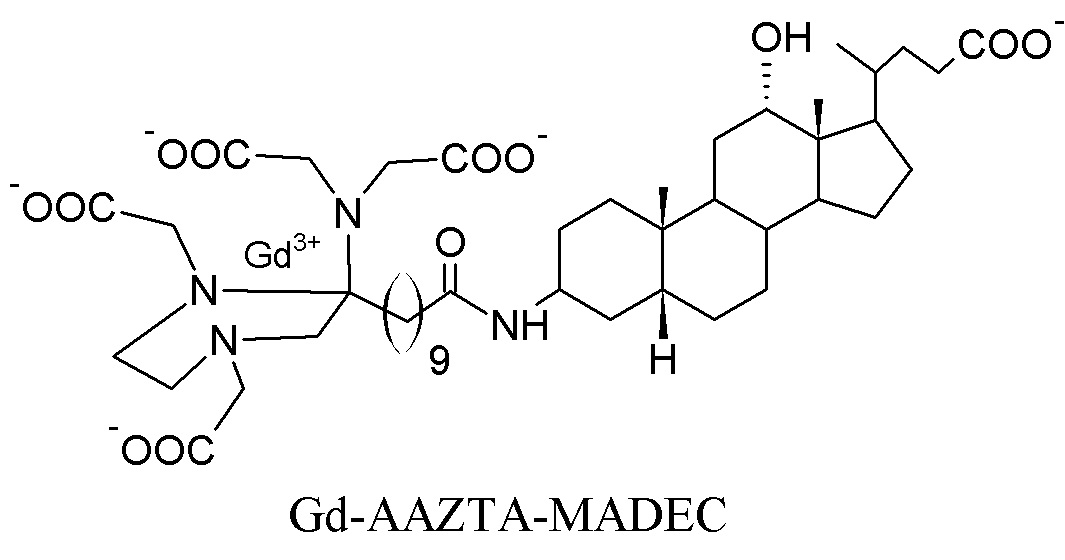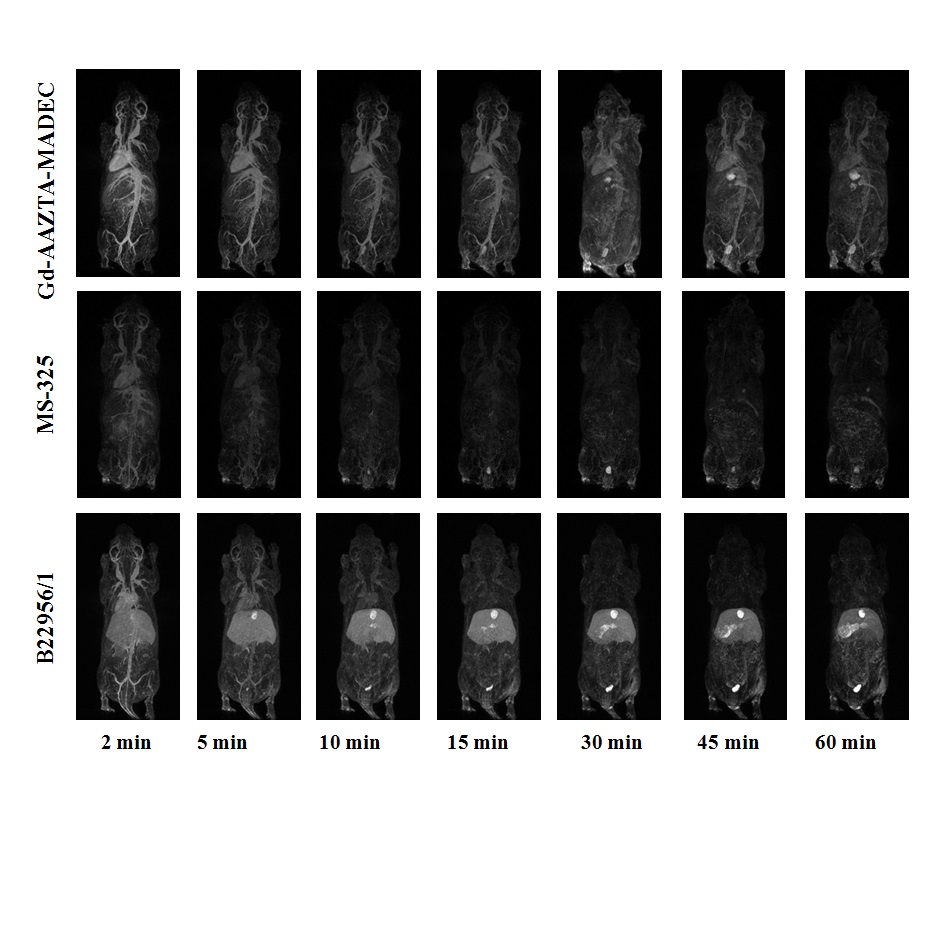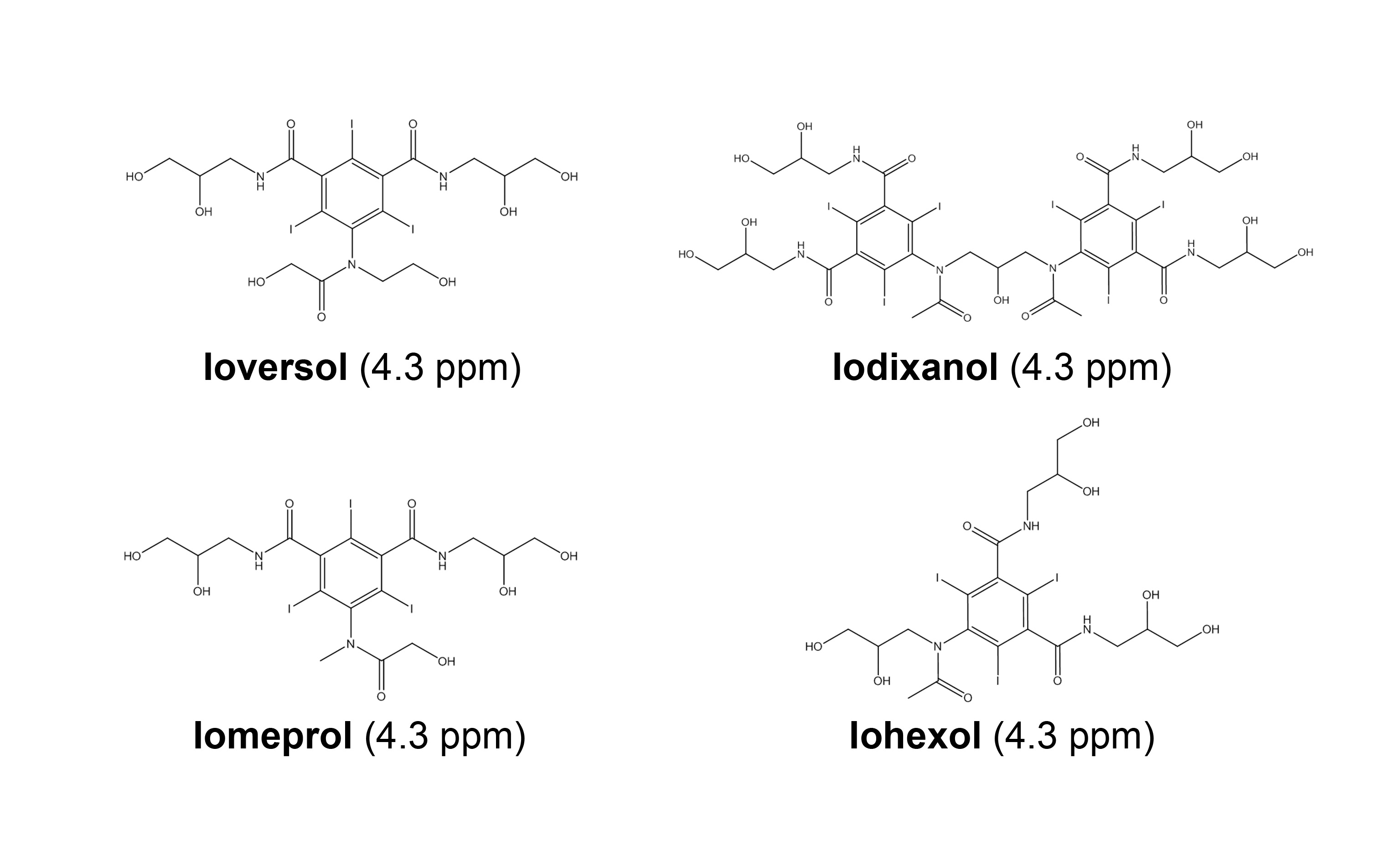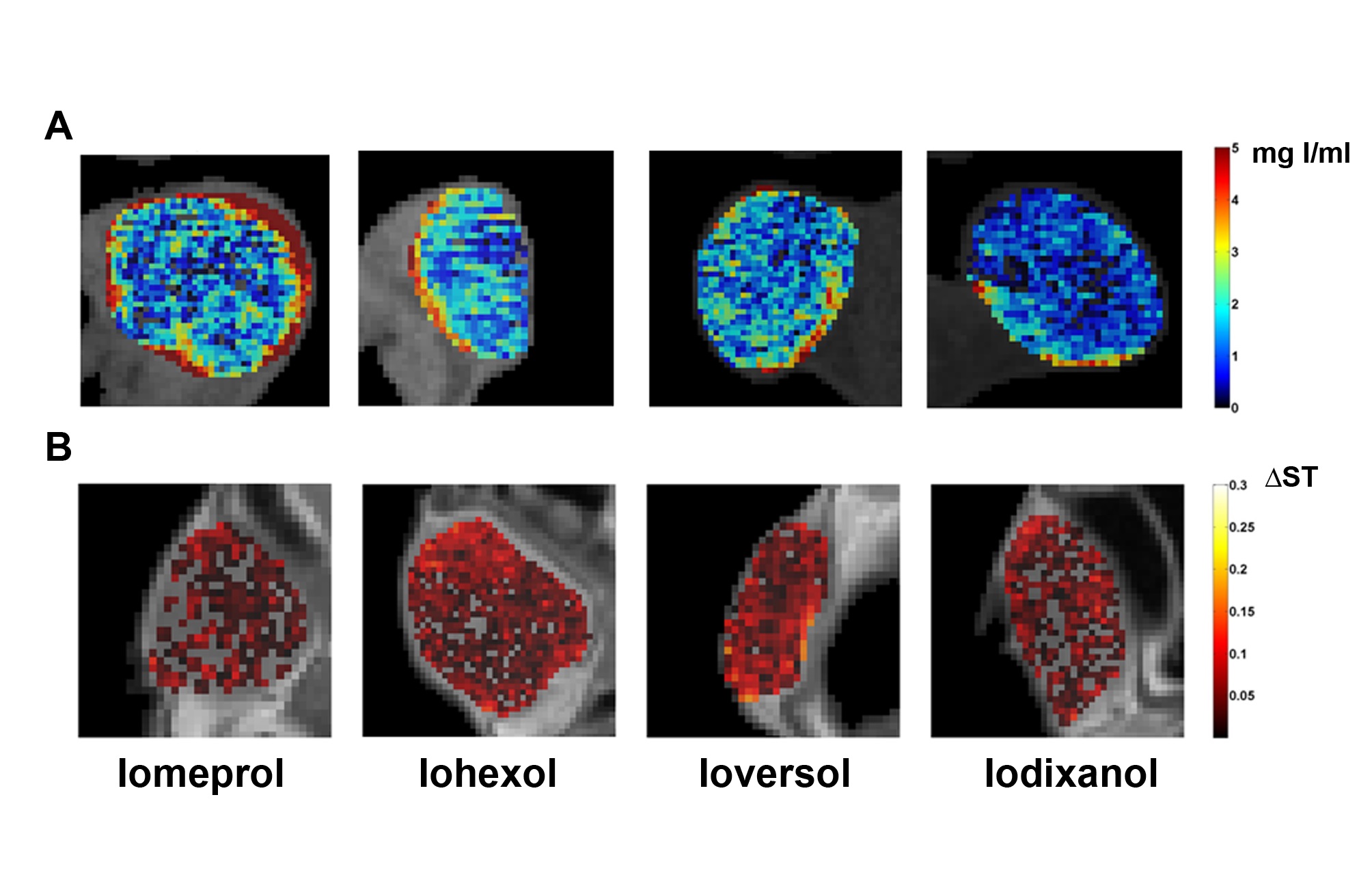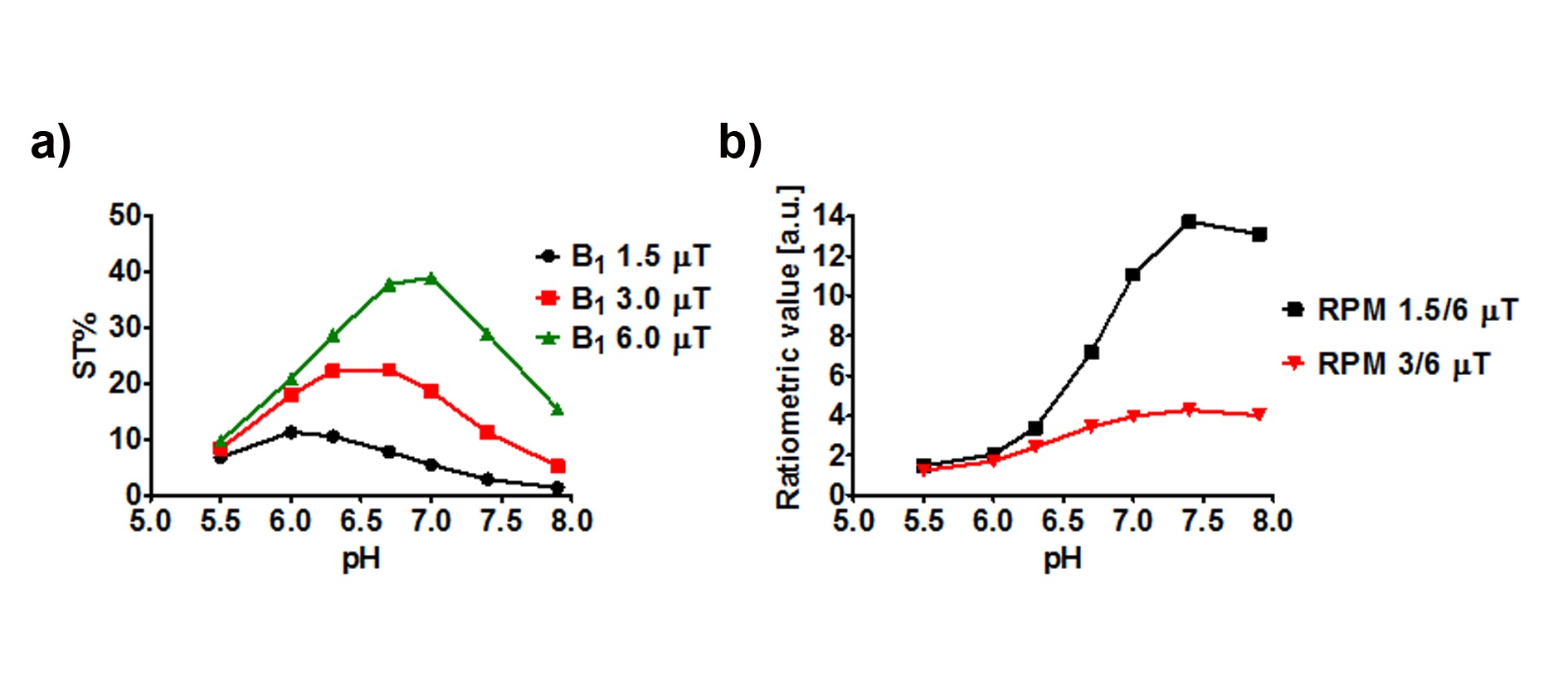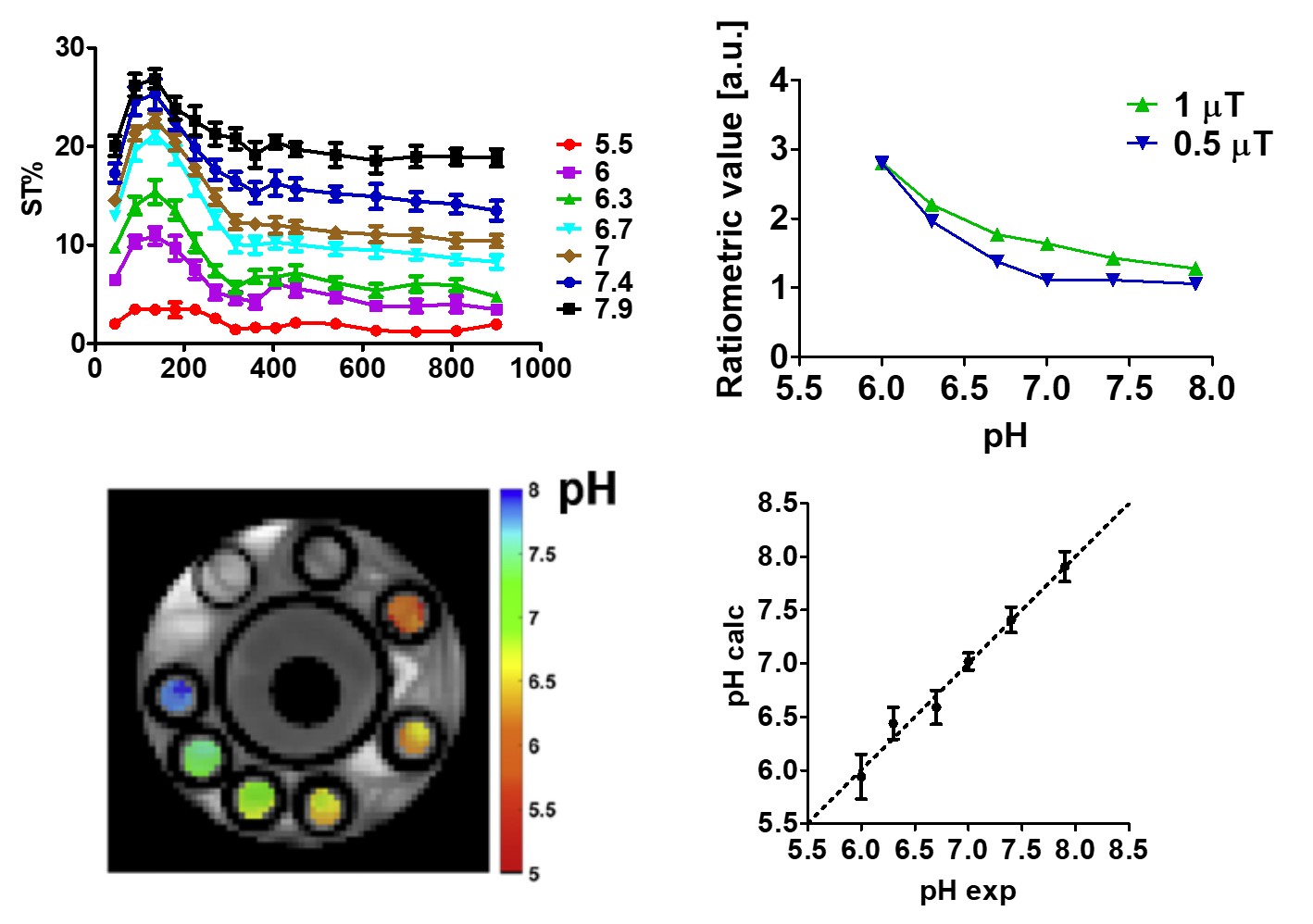Development of high-relaxivity Gd-based and responsive CEST contrast agents
MRI-based contrast agents are often required in order to improve the diagnostic content of the tomographic image.
Currently used small molecular weigth Gd-complexes, optimized for the clinical scenario, have been used in pre-clinical settings to report on
vessel architecture and on tumor vessel permeability.
Such Gd-based complexes have, unfortunately, sub-optimal contrast properties
when used with low-field (1 Tesla) pre-clinical MRI scanners in addition to sub-optimal binding properties to mouse serum albumin.
Despite Gd-based agents are an indispensable part of MRI examinations, in the past decades, two major clinical studies questioned their safety profiles
and alternatives to Gd-based agents are not readily available. Our lab discovered that Iodinated contrast media, playing a key-role in oncological
imaging can provide contrast enhancement in tumors (by exploiting the MRI-CEST approach) that is correlated with corresponding CT enhanced images.
In addition, we have demosntrated that most of them can be exploited as pH-responsive contrast agents.
We are interested in developing novel blood-pool Gd-based and CEST-based contrast agents with a focus for preclinical imaging applications.
In addition, we are exploring radiographic contrast media as novel MRI contrast agents for assessing tumor perfusion and acidosis.
